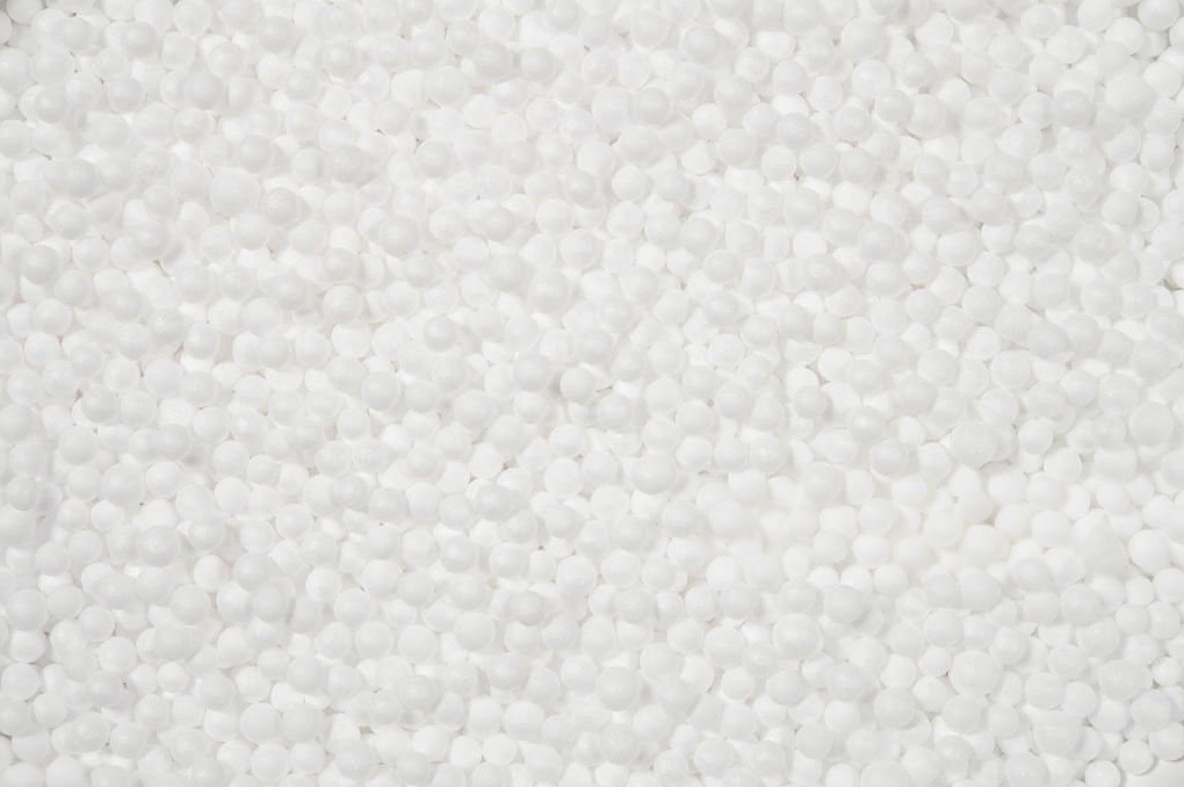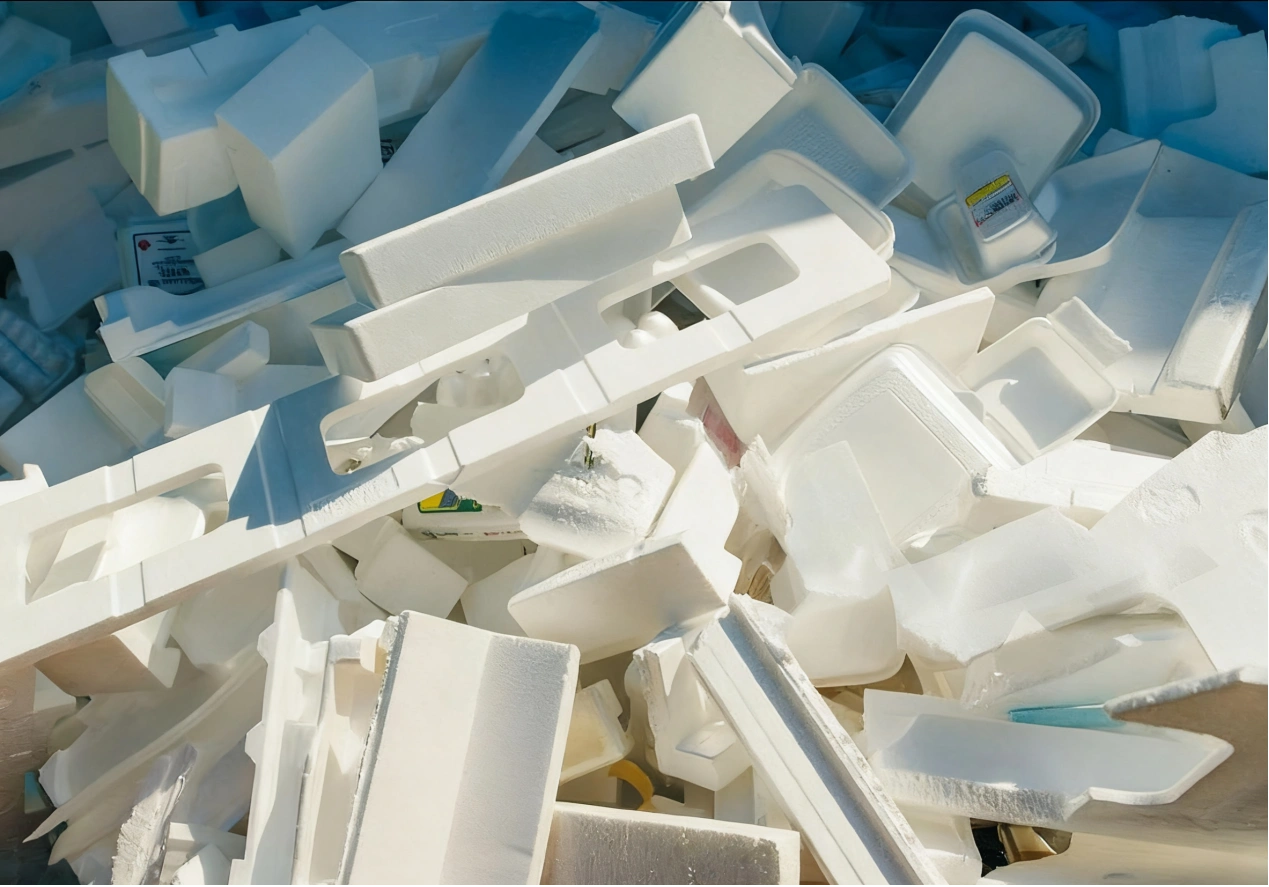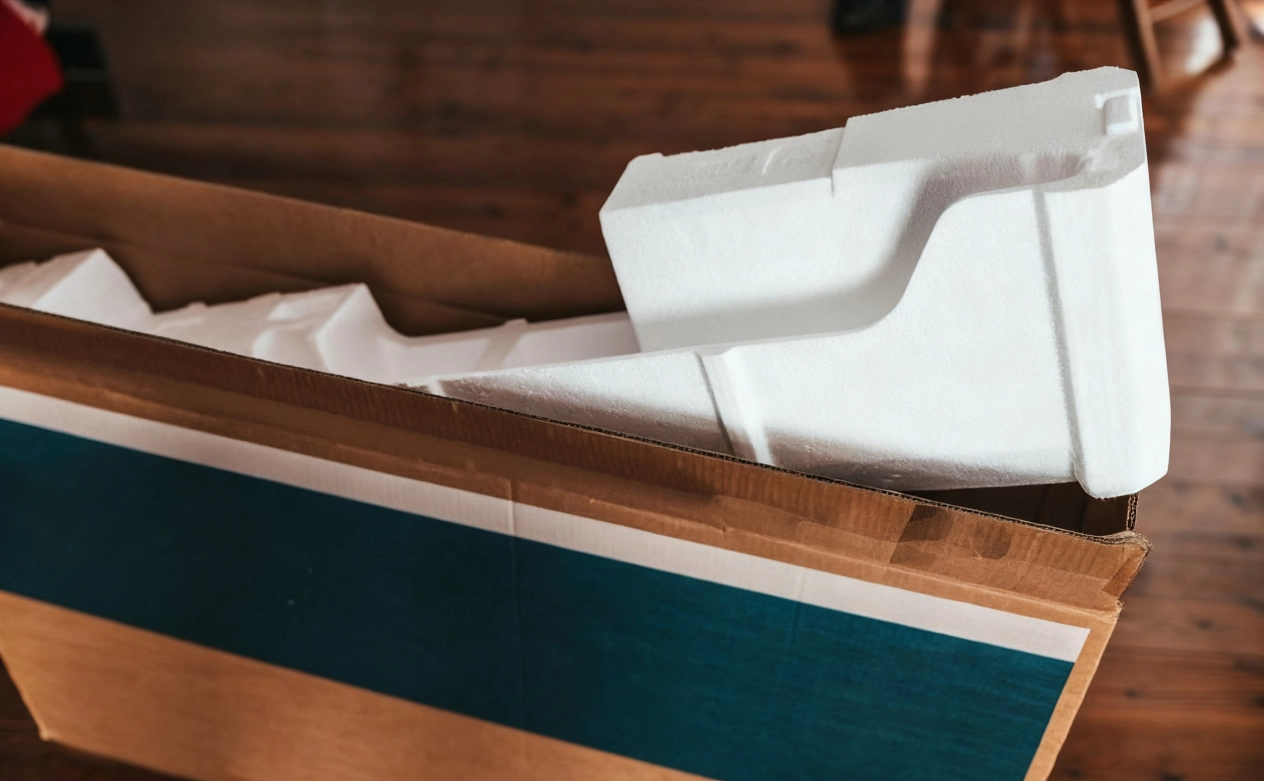
Stellen Sie sich ein katastrophales Szenario vor, in dem eine Sendung in Ihrem Lager ankommt und die Boxen während des Versands schwer beschädigt wurden. Im Inneren knackte die Elektronik mit versteckten Brüchen oder Automobilteile waren gerade genug zerrissen, um eine Rückkehr zu entfachen. Dies sind keine seltenen Unfälle - sie sind tägliche Kopfschmerzen für Hersteller und Versander gleichermaßen. Die Erträge steigen, das Kundenvertrauen erodiert, und das verlorene Einkommen? Es steckt. Traditionelle Verpackungen, denken Sie sperrig Karton oder grundlegende Schaumstoff-Einsätze, fällt oft kurz. Es ist teuer zu finden, hart auf dem Planeten mit seinen Abfällen und unzuverlässig unter realem Stress. Aber hier’ s eine Umstellung, die in Betracht gezogen werden sollte: maßgeschneiderter REPS-Schaum. Abkürzung für Recyclable Expanded Polyethylene Foam, tritt dieses Material als intelligentere Alternative ein. Bei HUASHENG haben wir es für genaue Passformen geschliffen und kombinieren Schutz mit Kosteneinsparungen. In diesem Beitrag werden wir entpacken, warum ein Wechsel zu benutzerdefiniertem REPS Ihr Verpackungsspiel neu gestalten könnte, indem wir auf jahrelange Field-Tweaks und Kundenfeedback zurückgreifen.
Die versteckten Kosten einer unzureichenden und generischen Verpackung
Wir haben alle die Statistiken gehört, aber lasst uns sie in Zahlen gründen. Die weltweiten Kosten für Produktschäden im Transit übersteigen jährlich 50 Milliarden Dollar, laut Logistikberichten von Unternehmen wie DHL. Für mittelständische Hersteller könnte dies bedeuten, dass 2-5% des jährlichen Umsatzes in dünne Luft verschwinden - Nachbearbeitung, Rückerstattungen oder Schrottwaren. Generische Verpackungen spielen hier eine große Rolle.
Kosten für Produktschäden
Eine einzelne geknackte Leiterplatte in einer Elektroniksendung könnte 200 Dollar kosten, um sie zu ersetzen, plus 150 Dollar an Arbeitskraft zur Diagnose. Multiplikieren Sie das mit 10 Vorfällen pro Monat, und Sie sehen $ 4.200 verschwunden. Ich habe gesehen, wie Kunden im Konsumgüterbereich noch mehr verlieren - einmal kam eine Palette von Glaswaren als Konfetti, weil dem Schaum der Griff fehlte. Generische Optionen zerbrechen unter Kompression; sie absorbieren Schocks schlecht, was zu Behauptungen führt, die in Margen essen. REPS hält sich mit seiner geschlossenen Zellstruktur besser aus, aber wir werden darauf zurückkehren.
Neben dem Aufkleber Preis gibt es die Welle. Wütende Kunden bedeuten negative Bewertungen, und im E-Commerce kann ein Ein-Sterne-Rückgang die Conversions um 5-9% senken. Es geht nicht nur um Geld, es geht um verlorene Impulse.
Kosten für Materialabfall
Dann kommt der Abfall. Traditionelle EPS-Polystyrol-Schaumstoffblätter werden oft überbestellt, um „nur für den Fall“-Szenarien abzudecken, was zu Abfällen führt, die auf Deponien gelangen. Eine typische Verpackungslinie kann je Lauf 15-20% der Materialien per Branchenaudit wegwerfen. Bei 0,50 $ pro Quadratfuß sind das echte Dollar - sagen wir, 1.000 $ monatlich für eine kleine Operation. Umweltlich ist es auch ein Drag; Nicht recycelbare Schaumstoffe bleiben seit Jahrhunderten. Durch präzise Dimensionssteuerung hat HUASHENG jedoch die Abfälle seiner Kunden in Pilotprojekten um 30 % reduziert.
Kosten für die Effizienz der Logistik
Effizienz schleicht sich auf Sie. Spannige Generikverpackungen blühen LKW-Ladungen auf - denken Sie daran, 20% mehr Volumen pro Palette zu haben, was zusätzliche Reisen oder untergefüllte Transporte bedeutet. Treibstoffkosten steigen auf diesen Strecken um 10-15%, und Verzögerungen steigen, wenn Zollflaggen übergroße Kisten zeigen.
Es sind die kleinen Drags, die sich addieren: längere Ladezeiten, mehr Handling-Fehler. In einer Welt, in der die Lieferung am selben Tag der König ist, kosten diese Schlucken mehr als Dollar - sie kosten Kunden.
Kosten für Umweltkonformität
Übersehen Sie die Regeln nicht. Mit den Verpackungsabfallrichtlinien der EU und den US-Förderungen für Recyclingstoffe erreichen Geldbußen für nicht konforme Materialien in einigen Fällen 10.000 US-Dollar pro Verstoß. Generische Schaumstoffe versäumen oft die Marke und zwingen Nachrüstungen oder Zertifizierungen, die jährlich 5.000-15.000 $ laufen. Darüber hinaus Greenwashing-Reaktion - Marken fördern Nachhaltigkeit, liefern aber in neuartigen Kunststoffen? Das zerstört die Loyalität schnell.
Der Übergang zu diesen Schmerzpunkten zeigt ein Muster: Generische Verpackungen sind nicht nur ineffektiv; Es ist eine Kette ruhiger Ausgaben. Aber was, wenn Sie um sie herum arbeiten könnten? Genau dort tritt benutzerdefinierter REPS-Schaum in den Rahmen ein und verwandelt Schwächen durch bewusstes Design in Stärken.

Maßgeschneiderter Schutz: Die Technik hinter kundenspezifischem REPS-Schaumstoff
Custom REPS ist das Ergebnis wiederholter Tests im Labor und im Werk. Bei HUASHENG beginnen wir mit winzigen 0,65 mm Perlen für komplexe Formen und erweitern dann auf 1,2 mm, um größere Bedürfnisse zu erfüllen. Unsere sorgfältige Aufmerksamkeit auf das Detail führte schließlich zu REPS-Schaumstoff, der nicht nur Konturen entspricht, sondern auch Dämpfung bietet. Außerdem verformt sich Standard-EPS unter nassen Bedingungen. REPS hingegen bleibt auch bei feuchten Bedingungen flach, was das Risiko eines Produktbruchs erheblich verringert.
Präzisionsdesign:
Die Präzision von maßgeschneiderten REPS beginnt mit Ihren Produktspezifikationen. Nehmen wir an, Sie verpacken zerbrechliche LCD-Panels - wir kartieren Drop-Tests bei 1,5 m, simulieren FedEx-Drops und passen dann die Dichte von 25g/L für leichte Dämpfung auf 50g/L für schwere Lasten an. Mit Tools wie CAD-Simulationen können wir virtuell Prototypen erstellen und physikalische Versuche halbieren. Keine Test-and-Error-Stacks mehr stattdessen schnappt der Schaumstofffutter genau wie erwartet perfekt in Ihre Box.
Diese Konstruktionsphase berücksichtigt auch reale Variablen – Schwingungsprofile von Schienenzügen oder thermische Schwingungen bei Wüstenversenden. Aus diesem Grund hat HUASHENGs benutzerdefinierte REPS in Kundenstudien unter 0,5% Schadensraten geklockt, im Vergleich zu 3-5% für Generika.
Hauptmerkmale:
REPS bietet ausgezeichnete Dämpfungseigenschaften. Tests haben gezeigt, dass diese unabhängigen, geschlossenen Schaumstoffe eine 75% höhere Schlagbeständigkeit bieten als offene Schaumstoffe. Nach dem 40-fachen Ausdehnen rebounden sie ohne dauerhafte Dämpfungen, was sie ideal für wiederholte Handhabung macht.
Zweitens sind sie leicht. Ein einzelnes Quadratmeterblatt mit einer Dichte von 33g/L kann im Vergleich zu dichteren Schaumstoffen 10-20% an Versandkosten sparen. Außerdem ist es anpassbar. Wir können die Farbe anpassen, um das Logo Ihrer Marke anzupassen, oder Flammschutzmittel zu medizinischen Verpackungen hinzufügen, während die Recyclingfähigkeit beibehalten wird - sie kann leicht zerkleinert und wiederverwendet werden.
Vom Ingenieurwesen bis zur Wirtschaft ist die Brücke klar – besseres Design bedeutet weniger Kopfschmerzen nachgelagert. Also, wie genau übersetzt sich das auf Ihre Endlinie?
Wie senkt kundenspezifischer REPS-Schaum Ihre Gesamtkosten?
Kosteneinsparungen mit benutzerdefinierten REPS sind nicht auffällig; Sie sind stabil, sich über Viertel zusammensetzen. Nehmen wir ein mittelständisches Elektronikunternehmen, mit dem wir zusammengearbeitet haben: Sie tauschten generisches EPS gegen maßgeschneiderte Einsätze aus und sahen Schadensersatzansprüche in sechs Monaten um 40% sinken. Das’ s nicht hype—it’ s verfolgten Daten aus ihren ERP-Protokollen.
- Schadensraten erheblich reduzieren: Der Schaden fresst den Gewinn roh. Custom REPS, das genau an die Form Ihres Produkts geformt ist, reduziert Auffälle um 50-70%, basierend auf unseren internen Benchmarks gegenüber Standard-EPS-Schaumstoffverpackungen. Der Grund dafür ist, dass es Kräfte gleichmäßig verteilt und Schwächen beseitigt, an denen sich Schwingungen konzentrieren können.
- Lagerfläche reduzieren: Der Weltraum ist Gold in engen Ops. Die Effizienz von REPS ermöglicht es Ihnen, Teile enger zu nesten - bis zu 25% mehr pro Palette - und die Regale für den Bestand freizugeben. Ein Automobillieferant erhielt 15% seines Bodens zurück und verwandelte ihn in eine Bühne. Bei $ 10 / qft jährlicher Mietvertrag, das’ S $ 3.000 jährlich gespart, plus schnellere Auswahl.
- Niedrigere Versandkosten: Gewicht und Volumen bestimmen die Fracht. Die niedrige Dichte von REPS - bis zu 25g / L - reduziert den Versand pro Einheit um 15-25 Cent und skaliert auf Tausende bei Volumenläufen. Fügen Sie kompakte Designs hinzu, und Sie passen mehr in Container, um Zuschläge zu vermeiden. Treibstoffsteigerungen treffen alle, aber leichtere Lasten puffern den Schlag.
- Markenbild verbessern: Schließlich der weiche Verkauf: Zuverlässigkeit baut Vertretung auf. Weniger Beschwerden bedeuten glühende Bewertungen, die den organischen Traffic über Mund-zu-Mund um 10-20% steigern. Marken, die unsere benutzerdefinierten REPS verwenden, heben sie oft in Unboxings hervor – denken Sie an „umweltfreundliche Verpackungen“-Tags, die resonieren.
Praktische Anwendungen von REPS-Schaum im realen Leben
Die Theorie ist gut, aber echte Jobs testen Mut. Custom REPS leuchtet in hohen Stellen, von zerbrechlicher Technologie bis hin zu robusten Transporten. Wir haben über 1.000 Tonnen jährlich geliefert und für jeden Sektor angepasst. Bringen wir es mit Fällen ab, die kleben.

- Elektronische Produktverpackung: Elektronik verlangt Finesse. Für Handys oder Tablets fertigen wir Trays mit 0,76 mm Perlen, die 50% mehr Schock absorbieren als grundlegende Expandiertes Polystyrol-Verpackungen. Ein Notebook-Hersteller nutzte unsere Einsätze für OLED-Panels - Null Kratzer über 10.000 Einheiten.
- Schutz von Automobilteilen: Autoteile nehmen Schläge. Denken Sie an Motorblöcke oder EV-Batterien - benutzerdefinierte REPS-Blöcke mit einer Dichte von 40 g / L schützen sie und reduzieren Dings um 60%. Ein Tier-1-Lieferant für neue Energiefahrzeuge berichtete, dass er vierteljährlich 22.000 Dollar bei Ablehnungen sparte. Es ist die benutzerdefinierte Kante: Konturierte Formen, die Stücke einsperren, keine Schichten mitten auf der Strecke.
- Sicherheit medizinischer Geräte: Medizinische Ausrüstung kann sich keine Rutschen leisten. Sterile Kisten mit REPS Schaumstoff Hersteller Spezifikationen gewährleisten hypoallergen, staubarmen Schutz. Für Bildgeräte erreichen wir 258kPa Druckfestigkeit bei 10% Verformung, pro GB / T-Tests. Ein Krankenhausnetz reduzierte die Transit-Pausen von 8% auf 1,2%, wodurch jährlich 50.000 $ an Ausrüstung erhalten wurden.
Schlussfolgerung
HUASHENG maßgeschneidert REPS Schaum zeichnet sich als Spielwechsler für Unternehmen aus, die die Fallen traditioneller Verpackungen bekämpfen. Die präzise entwickelte Passform reduziert die Schädenraten um bis zu 70%, spart Tausende von Erträgen und steigert das Kundenvertrauen. Neben dem Schutz senkt es die Logistikkosten um 12-25% durch leichtere, kompakte Konstruktionen, spart Lagerplatz und senkt Frachtbudgets. Umweltfreundlich entspricht seine Recyclingfähigkeit den globalen Standards, vermeidet Compliance-Bußgelder und ist für umweltbewusste Märkte attraktiv.
Wenn Sie maßgeschneiderte Dienstleistungen benötigen, kontaktieren Sie uns bitte unter info@r-eps.comWir entwickeln einen Plan, der Ihre Produkte und Ihr Ergebnis schützt. Lassen Sie uns Ihre nächste Lieferung die sicherste machen!






